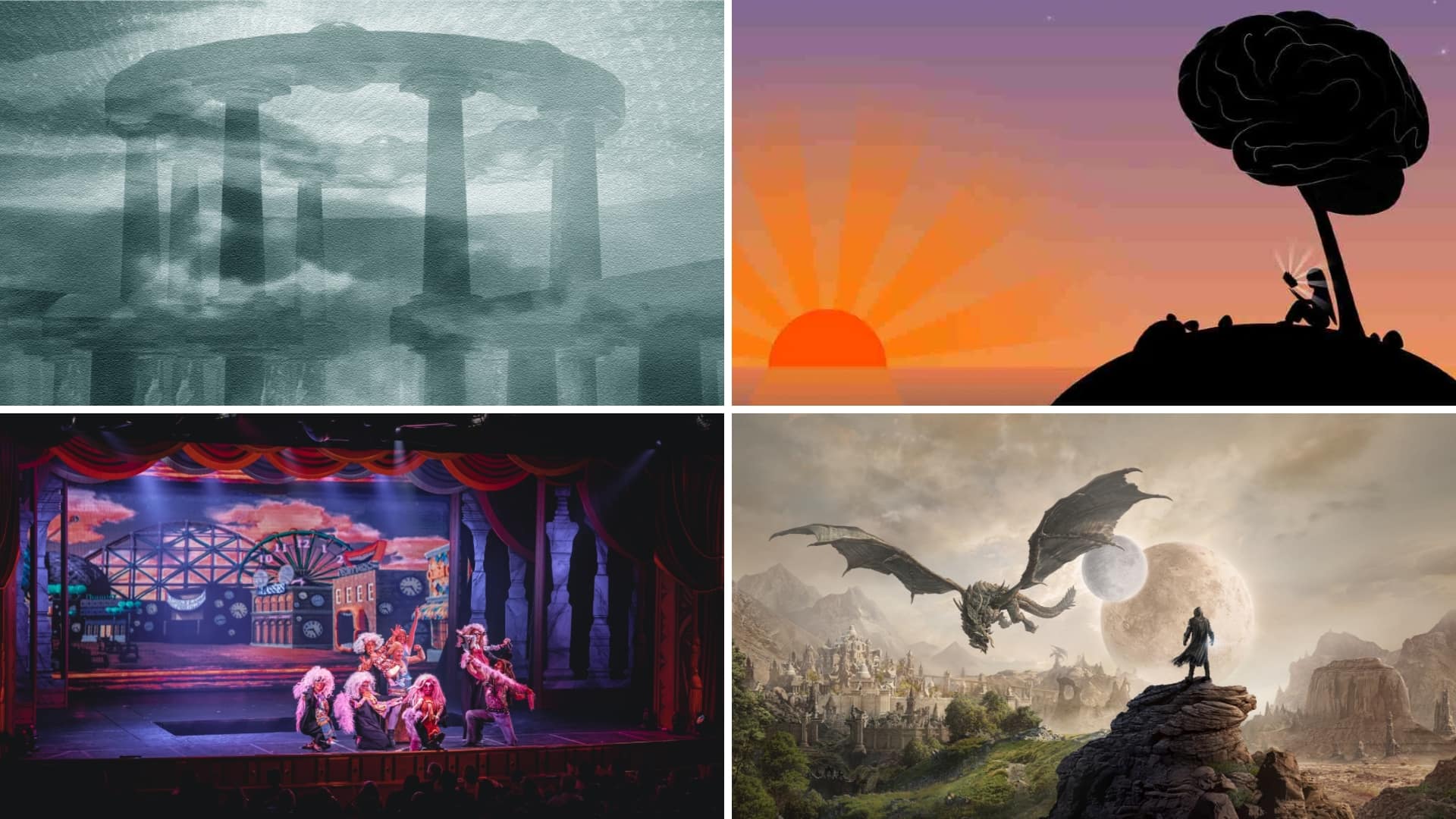Suspension of disbelief gives artists the liberty to create worlds in a realm separate from reality. But what is suspension of disbelief? Where did suspension of disbelief originate? And why is suspension of disbelief important to artists and connoisseurs of art? We’re going to answer those questions by defining suspension of disbelief and by looking at suspension of disbelief examples. By the end, you’ll know everything there is to know about suspension of disbelief.
Suspension of Disbelief Meaning
What does suspension of disbelief mean?
English poet and philosopher Samuel Taylor Coleridge is widely credited with introducing “suspension of disbelief” in his 1817 text Biographia Literaria. This “suspension,” also referred to as poetic faith, is meant to examine supernatural “persons and characters, or at least romantic, yet so as to transfer from our inward nature a human interest and a semblance of truth sufficient to procure for these shadows of imagination that willing suspension of disbelief for the moment.”
Coleridge and colleague William Wordsworth espoused the philosophy of suspending disbelief in their writing.
At some level, we must be able to recognize a story as something unbelievable – because the alternative is that we recognize a story as something just as real as our regular lives.
This next video examines Coleridge’s philosophy behind the suspension of disbelief in further detail.
Literary Definition of Willing Suspension of Disbelief • The Willing Suspension of Disbelief by Tom Bartlett at TEDx
Some philosophers argue that suspension of disbelief is essential to healthy cognitive function, and thus, individuals who are unable to suspend disbelief – especially in regards to violent media – present higher degrees of cognitive dissonance and psychopathy. But before we get too far into the issue, let’s first define suspension of disbelief.
SUSPENSION OF DISBELIEF DEFINITION
What is suspension of disbelief?
Suspension of disbelief is the avoidance of logic in works of fiction; or the “unreal” filter through which connoisseurs of art choose to accept as part of the diegesis. The tenets behind “suspension of disbelief” was commented on by Greek writers such as Aristotle – and was formally presented by poet Samuel Taylor Coleridge in 1817.
Where Suspension of Disbelief is Needed?
- Books
- Movies
- Video Games
What is Suspension of Disbelief in Film?
Suspension of disbelief film examples
Movies often ask audiences to suspend disbelief when it comes to unbelievable circumstances. The repetitive use of unbelievable circumstances is regarded as a movie trope.
Some examples include:
Enemies who are way less powerful than the protagonist(s) – AKA cannon-fodder: Star Wars’ stormtroopers, opposing military forces, etc.
Technology that doesn’t (and may never never) exist: “the enhance mode” in police procedurals/court dramas
Elements of deus ex machina: some savior arrives at the perfect time
To suspend disbelief is to accept such conditions as natural parts of the movie’s diegesis. That doesn’t mean the usage of these conditions are immune to criticism. Many movie critics often say that if one is “willing to suspend disbelief, they will find enjoyment” in certain movies.
However, it’s generally agreed upon that filmmakers must take responsibility for how much they ask the audience to suspend their disbelief. For a realist movie, such as Pather Panchali, there’s little lee-way.
Consequently, for a surrealist movie, such as Eraserhead, or a romantic movie, like one in the style of Coleridge, there is plenty of room to play with characters and imagery beyond reality.
This next video takes a look at how filmmakers tackle the seemingly indomitable task of making us care about something that isn’t real.
What is Suspension of Disbelief? • How Movies & TV Become Unbelievable by Georg Rockall-Schmidt
Perhaps it’s true that suspension of disbelief is impossible to uphold. But what’s the alternative? A conscious state of perfect perception? There’s no definitive answer – but there is a well-warranted perspective… that is that suspension of disbelief allows us to enjoy works of art.
What is Suspension of Disbelief in Games?
Suspension of disbelief in interactive media
Many of the world’s most popular games task players with committing excessive violence on a massive scale. That doesn’t sound good right? Well, it wouldn’t be if players weren’t able to suspend disbelief and understand that video games are not real.
Suspension of disbelief is rooted in the theory of catharsis; or the release of tension through a form of exercise. In the case of gaming, tension is released through the exercise of competition; not just multiplayer competition, but single-player competition as well. The act of completing a challenge has been demonstrably proven to have a cathartic effect on people, young and old.
Up Next
How to Adapt a True Story
Suspension of disbelief asks us to look past a story’s imperfections because we know it isn’t real. But what happens when a story is based on something that actually happened? In our next article, we’ll show you how to adapt a true story, with examples from Adaptation, Uncut Gems, and more. By the end, you’ll know whether or not suspension of disbelief applies to adapted works.
Up Next: Writing Fiction Based on True Events →
Share your vision with elegant shot lists and storyboards.
Create robust and customizable shot lists. Upload images to make storyboards and slideshows.
